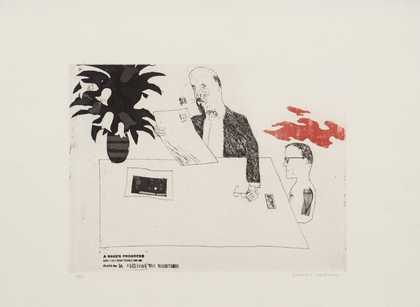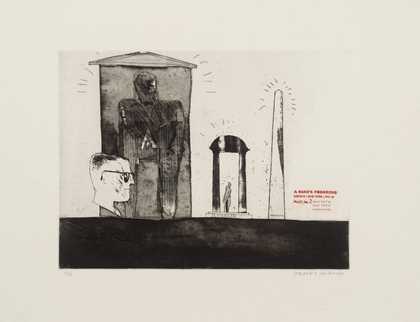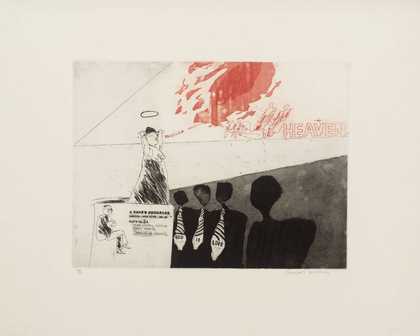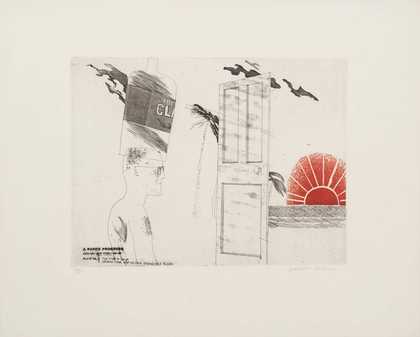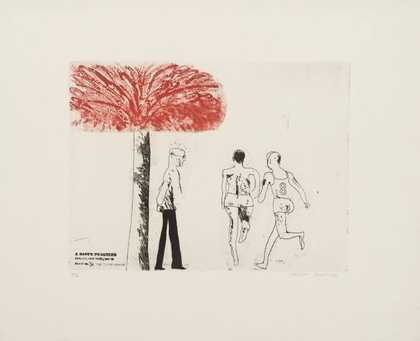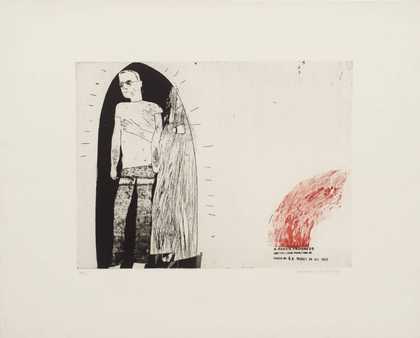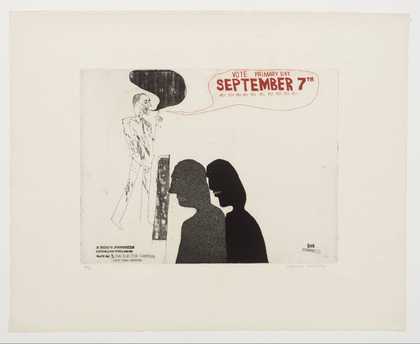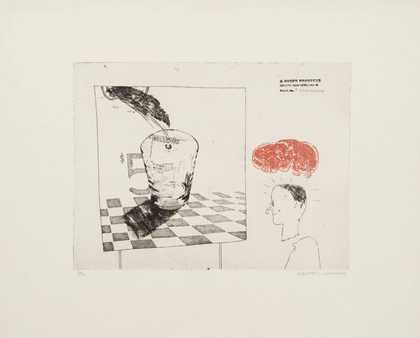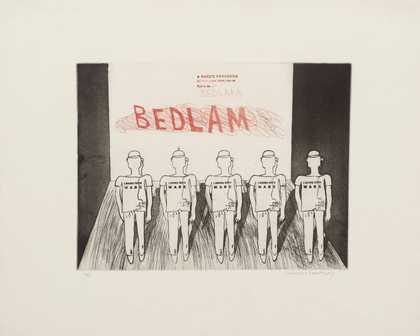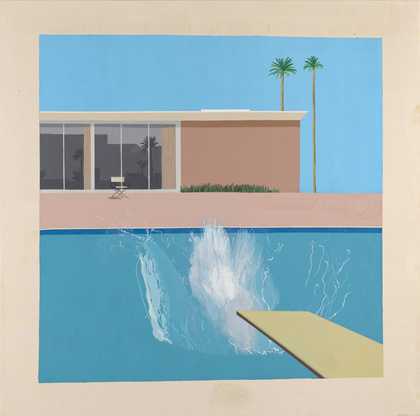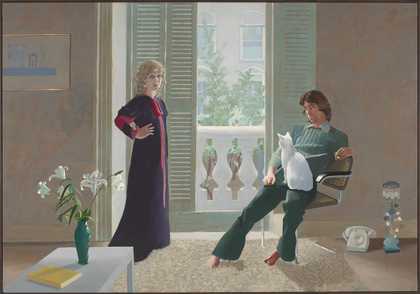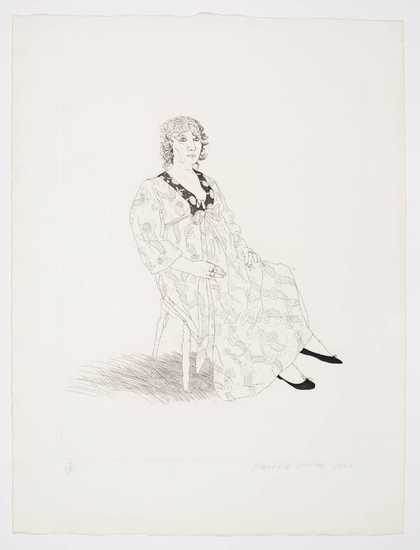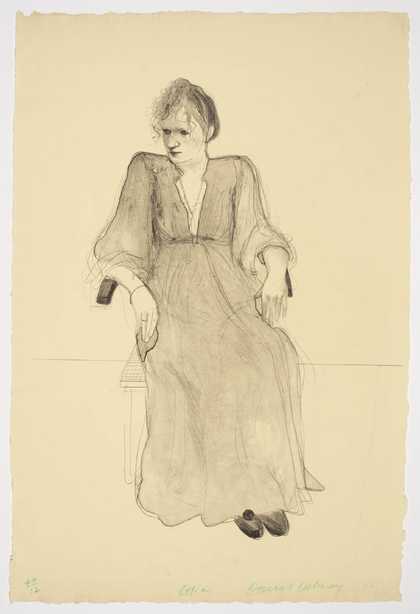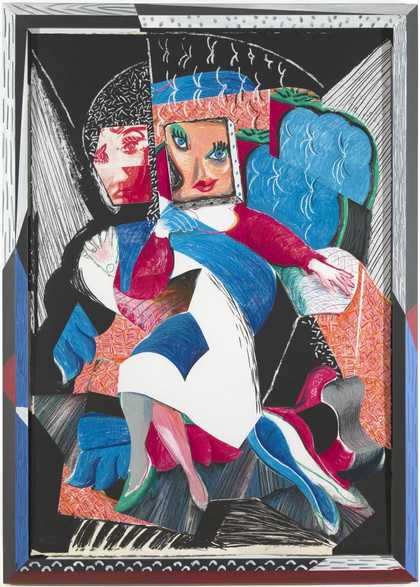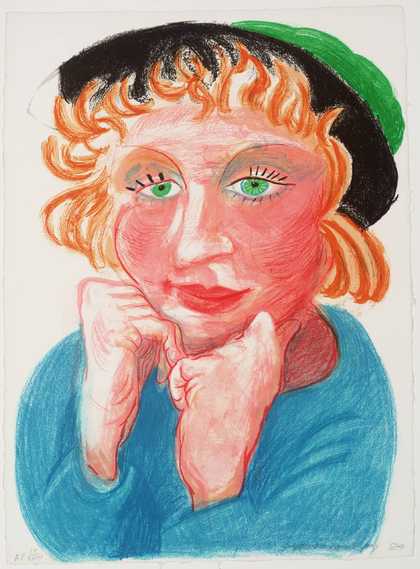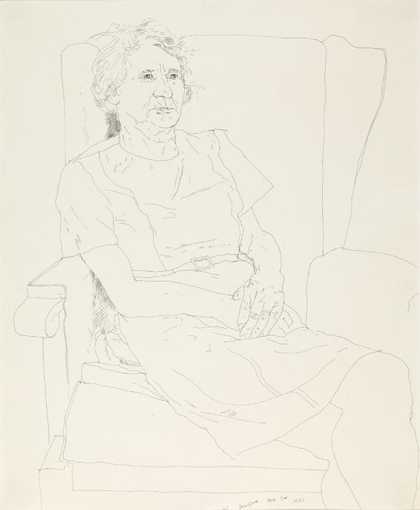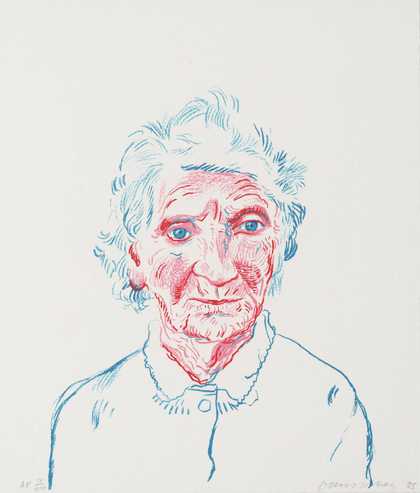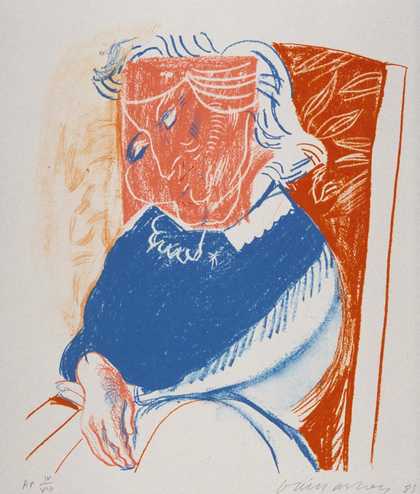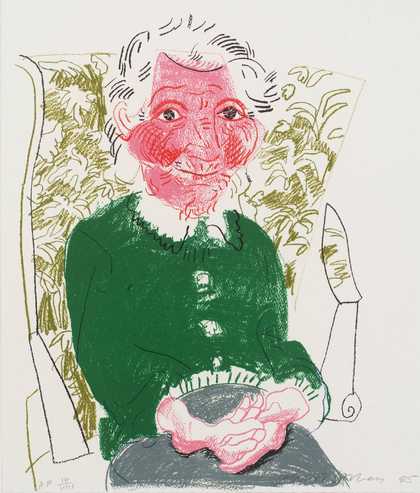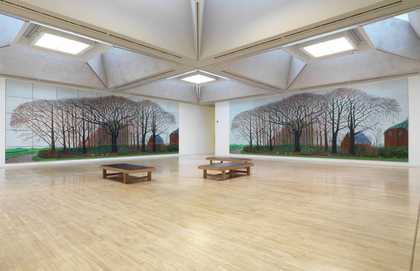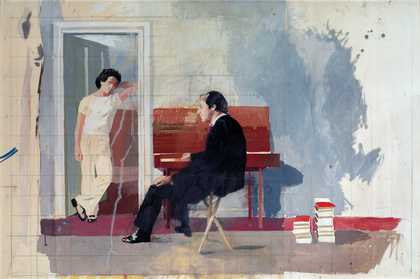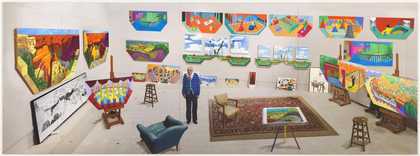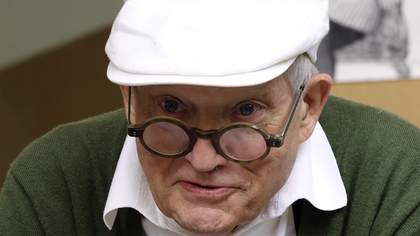This film file is broken and is being removed. Sorry for any inconvenience this causes.
Watch Hockney reflect on over 60 years of painting, drawing, printmaking and photography
David Hockney is an English painter, draughtsman, printmaker, stage designer and photographer. An important contributor to the pop art movement of the 1960s, he is considered one of the most influential British artists of the twentieth century.
From his portraits and images of Los Angeles swimming pools, through to his photography and Yorkshire landscapes, Hockney’s style continues to change. As the artist approaches his eightieth birthday, we explore the themes of Hockney’s work and his various ways of working.
Early life
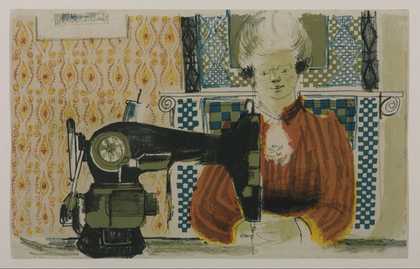
David Hockney
Woman with a Sewing Machine (1954)
Tate
Born in Bradford, Yorkshire in 1937, David Hockney decided to pursue a career as an artist at a young age. In 1953 he joined Bradford School of Art, where he received a traditional training based on drawing from life and produced figure studies, portraits and cityscapes. Hockney found art school a liberating experience, explaining:
I was interested in everything at first […] It was thrilling after being at the Grammar School, to be at a school where I knew I would enjoy everything they asked me to do. I loved it all and I used to spend twelve hours a day in the art school. For four years I spent twelve hours a day there every day
Created while an art student, Woman with a Sewing Machine 1954 is one of Hockney’s earliest prints and shows his mother, Laura Hockney as his model. Hockney would go on to portray her numerous times and in a range of mediums.
Art School
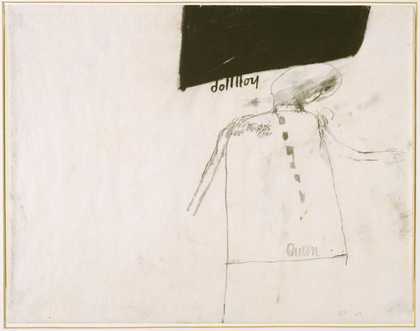
David Hockney
Study for Dollboy (1960)
Tate
In 1959 Hockney began his studies at the Royal College of Art, London, where he met artists including Allen Jones, Peter Phillips and Patrick Caulfield.
Hockney’s early graphic works laid the foundations for his artistic career. Much of this work is autobiographical and alludes to the artist’s sexuality. However, because homosexuality was not decriminalised in Britain until 1967, these references are often subtle (such this work’s use of the gay slang term ‘queen’).
This charcoal drawing was created in preparation for one of Hockney’s major early paintings Doll Boy 1960. The naïve and unpolished style has qualities of outsider art, particularly the work of Jean Dubuffet, whom Hockney admired stating ‘it was his style of doing images, the kind of childish drawings he used that attracted me’. Hockney idolised the pop singer Cliff Richard, often featuring him in his work at this time. The title Doll Boytakes inspiration from the song Living Doll popularised by Richard. As Hockney comments:
Doll Boy was a reference to the pop singer Cliff Richard, who was very attractive, very sexy. […] I used to cut out photographs of him from newspapers and magazines and stick them up around my little cubicle in the Royal College of Art, partly because other people used to stick up girl pin-ups, and I thought, I’m not going to do that, can’t do that, and here’s something just as sexy
A Rake's Progress
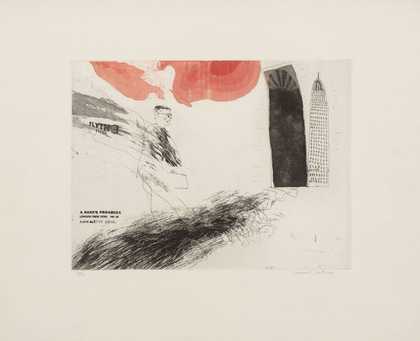
David Hockney
1. The Arrival (1961–3)
Tate
On returning from his first trip to New York in 1961, Hockney began sixteen etchings for A Rake’s Progress 1961–3,inspired by William Hogarth’s series of the same name painted in 1735.
Hockney’s series of etchings depict a journey of self-discovery, in which a young artist and gay man struggles to find his way in 1960s New York. Although Hockney uses his own experiences to inform the graphic tale, he states ‘it is not really me. It’s just that I use myself as a model because I’m always around’.
Much of the imagery takes inspiration from popular advertising. Using slogans to illustrate the affects of a commerical society, Hockney’s hero experiences a social dilemma and potential loss of individuality in an American city.

